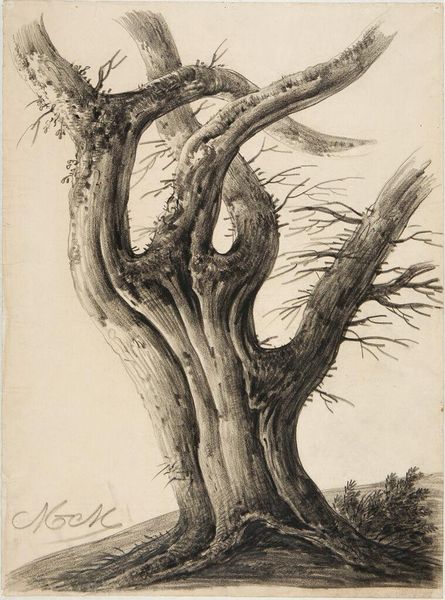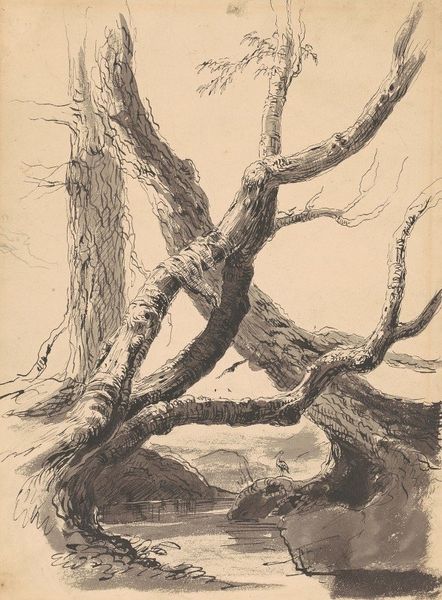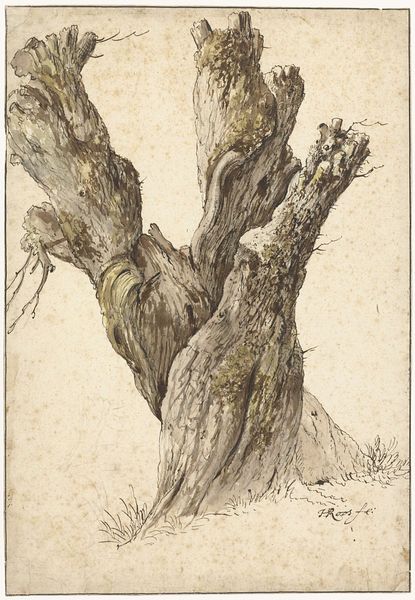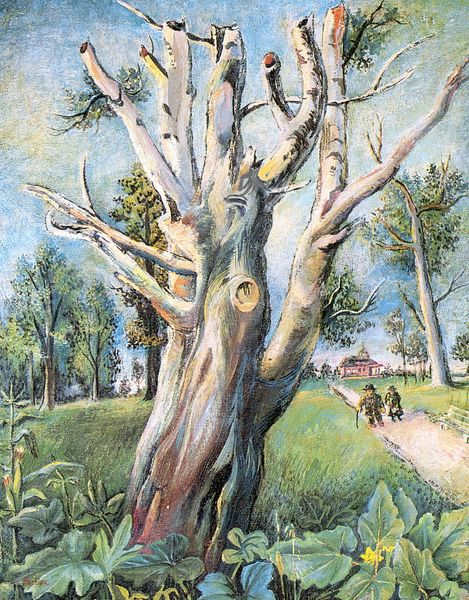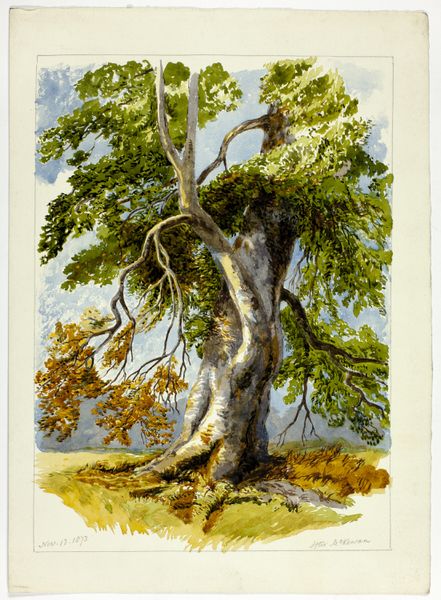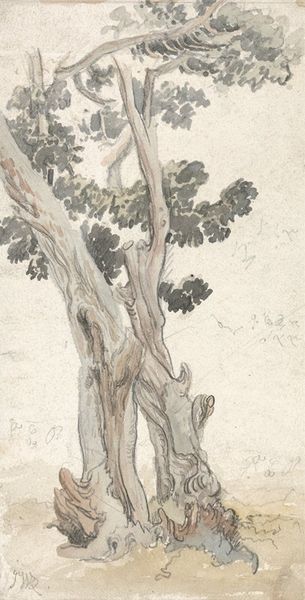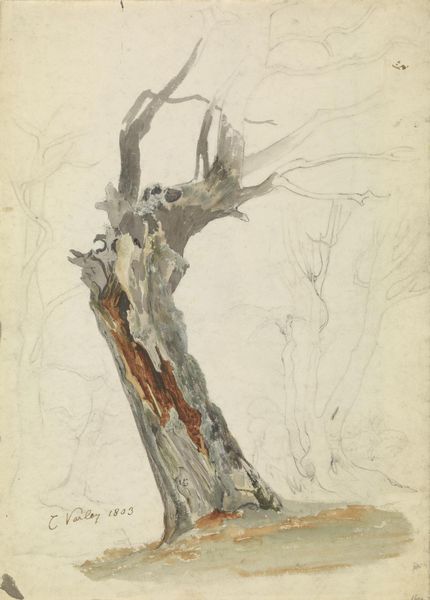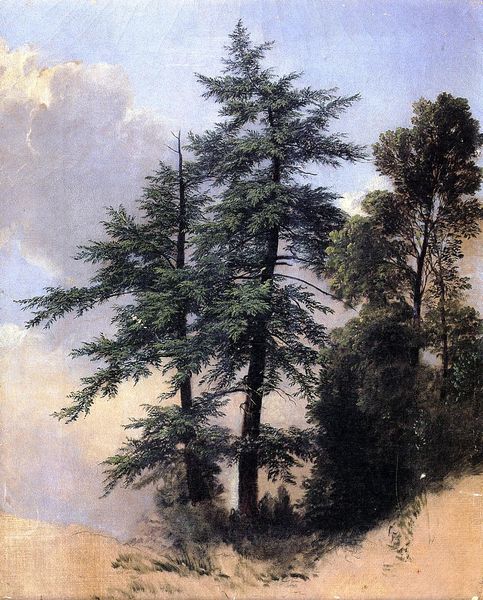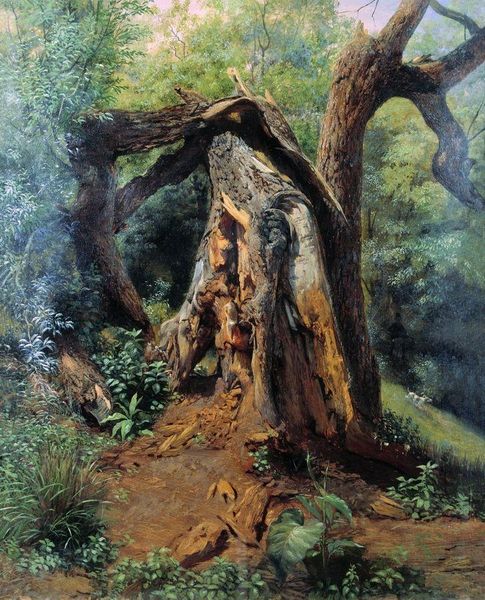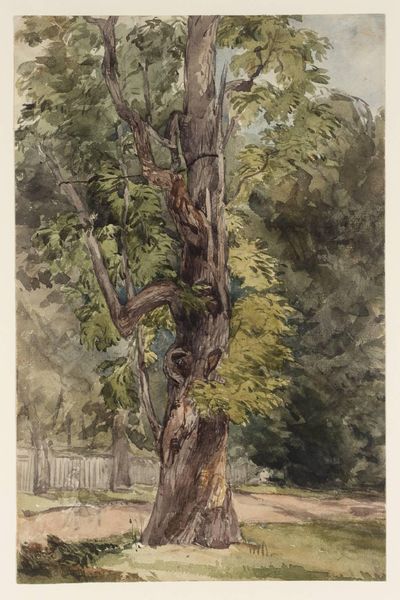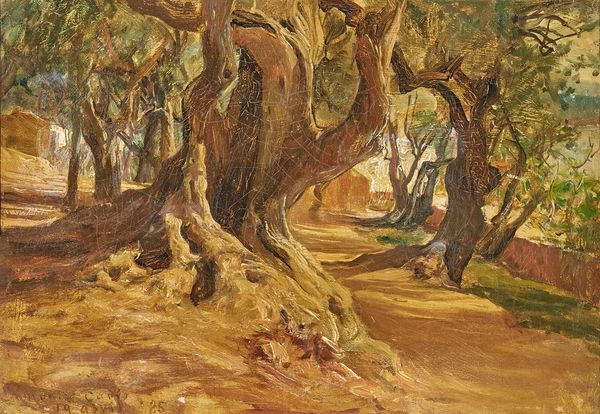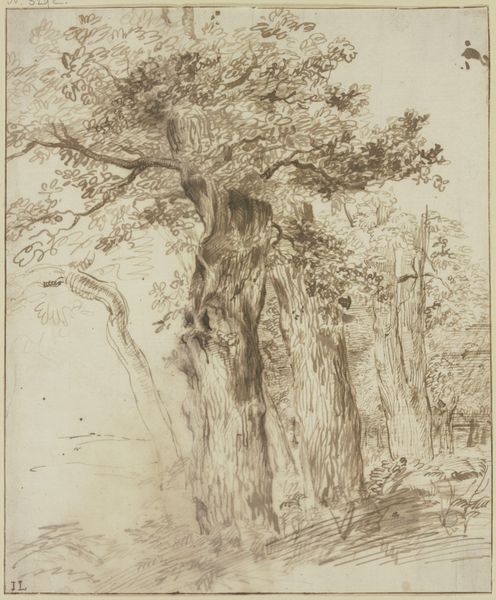
painting, plein-air, oil-paint, impasto
#
tree
#
painting
#
plein-air
#
oil-paint
#
landscape
#
impressionist landscape
#
oil painting
#
impasto
#
realism
Copyright: Public domain
Editor: Here we have David Johnson's oil painting, "Study of a Cedar". There isn't a specific date for it, but the texture of the bark feels so palpable, and I’m struck by how much presence it has, almost like a portrait of an individual. What do you see in this piece? Curator: This painting calls out to me because of the intersectional story it whispers. While seemingly a straightforward depiction of nature, the *plein air* style places the artist directly within the landscape, immediately positioning the painting within debates surrounding land ownership, industrialization, and westward expansion. The almost anthropomorphic qualities of the tree can then be read as an emblem of resilience amidst these struggles. Consider how different groups in nineteenth-century America had distinct relationships to nature – Native Americans, enslaved people, farmers, industrialists. Which of these groups do you think would identify with this cedar, and why? Editor: I hadn't considered it in that light at all! I suppose Indigenous populations, particularly, would see a connection with the enduring presence and strength of nature, while those profiting from deforestation probably wouldn't. The tree's ruggedness perhaps suggests defiance. Curator: Exactly. And thinking about that ruggedness: where does "realism" end and "romanticism" begin? Johnson uses the *plein air* method, painting in the outdoors, to bring nature to the canvas with the style of Realism. What if we see those impasto strokes of paint also contributing to an idealization of nature and thus placing it into dialogue with Romanticism? That could broaden our reading of the painting, situating it in tension with evolving views on ecology. Editor: So it becomes less about a simple depiction and more about the artist's active negotiation of these complex relationships. Thank you! Curator: My pleasure. These nuanced layers can deepen our appreciation and connect it with contemporary social dialogues about environmental justice, racial equity, and economic exploitation.
Comments
No comments
Be the first to comment and join the conversation on the ultimate creative platform.
